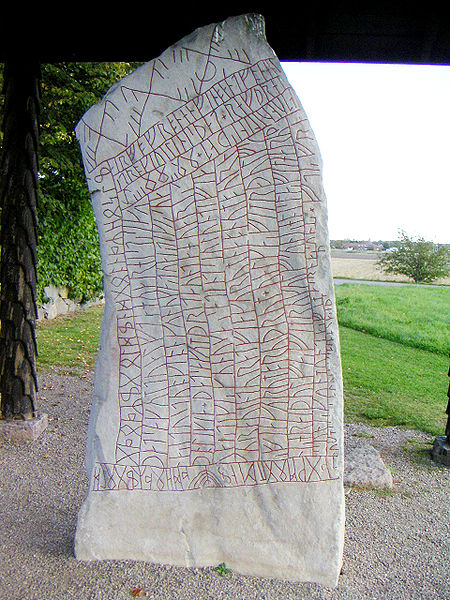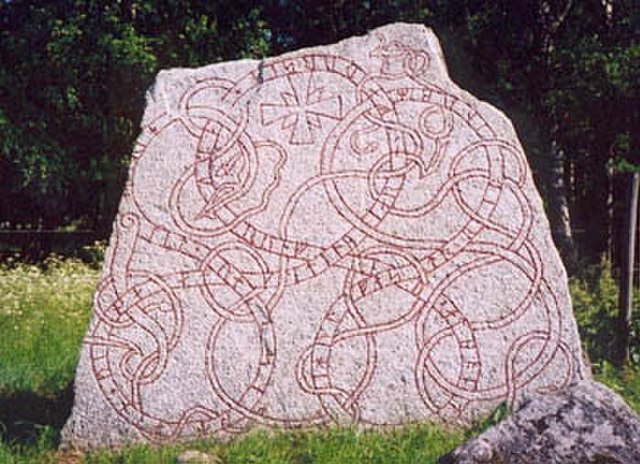The Cirth is a semi‑artificial script, based on real‑life runic alphabets, one of several scripts invented by J. R. R. Tolkien for the constructed languages he devised and used in his works. Cirth is written with a capital letter when referring to the writing system; the letters themselves can be called cirth.
Rock carving in Cirth in the Sydney Harbour National Park, dating back to the 1980s at least
A rune is a letter in a set of related alphabets known as runic alphabets native to the Germanic peoples. Runes were used to write Germanic languages before they adopted the Latin alphabet, and for specialised purposes thereafter. In addition to representing a sound value, runes can be used to represent the concepts after which they are named (ideographs). Scholars refer to instances of the latter as Begriffsrunen. The Scandinavian variants are also known as fuþark, or futhark, these names derived from the first six letters of the script, ⟨ᚠ⟩, ⟨ᚢ⟩, ⟨ᚦ⟩, ⟨ᚨ⟩/⟨ᚬ⟩, ⟨ᚱ⟩, and ⟨ᚲ⟩/⟨ᚴ⟩, corresponding to the Latin letters ⟨f⟩, ⟨u⟩, ⟨þ⟩/⟨th⟩, ⟨a⟩, ⟨r⟩, and ⟨k⟩. The Anglo-Saxon variant is futhorc, or fuþorc, due to changes in Old English of the sounds represented by the fourth letter, ⟨ᚨ⟩/⟨ᚩ⟩.
Runes
The inscription on the Einang stone (AD 350–400), reading [Ek go]ðagastiz runo faihido ("[I, Go]dguest painted/wrote this runic inscription"), is the earliest Germanic epigraphic attestation of the term.
An inscription using cipher runes, the Elder Futhark, and the Younger Futhark, on the 9th-century Rök runestone in Sweden
A Younger Futhark inscription on the 12th-century Vaksala Runestone in Sweden



![The inscription on the Einang stone (AD 350–400), reading [Ek go]ðagastiz runo faihido ("[I, Go]dguest painted/wrote this runic inscription"), is the](https://upload.wikimedia.org/wikipedia/commons/thumb/2/2c/Einangsteinen_inscript.jpg/640px-Einangsteinen_inscript.jpg)

